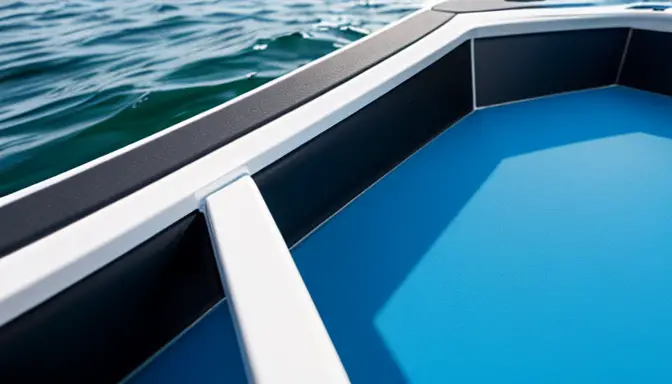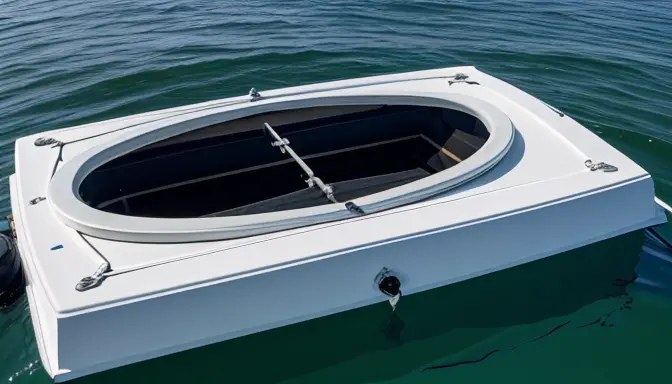When it comes to protecting your boat from water infiltration and ensuring a dry interior, choosing the best weather stripping for your hatches is paramount. The right weather stripping not only seals your boat hatches effectively but also provides insulation and durability against harsh marine conditions. Let’s dive into the world of weather stripping and discover how to safeguard your boat with the top-quality options available.
- Rubber Weather Stripping: Known for its flexibility and water-resistant properties, rubber weather stripping is a popular choice for boat hatches.
- Foam Weather Stripping: Lightweight and easy to install, foam weather stripping offers excellent sealing capabilities for various hatch sizes.
- Silicone Weather Stripping: With superior durability and resistance to UV rays, silicone weather stripping is ideal for long-lasting protection.
Proper installation of weather stripping is crucial to ensure a secure and watertight seal on your boat hatches. By following the step-by-step guidelines, you can effectively apply the weather stripping and prevent any potential leaks or damage caused by water intrusion. Investing in quality weather stripping not only enhances the functionality of your boat hatches but also minimizes maintenance requirements in the long run.
Importance of Weather Stripping for Boat Hatches
When it comes to protecting your boat from the elements, ensuring that your boat hatches are properly sealed is paramount. The cannot be overstated. By creating a tight seal around the edges of your hatches, weather stripping serves as a barrier against water intrusion, keeping the interior of your boat dry and free from leaks.
Without effective weather stripping, water can seep through gaps and cracks in the hatch, leading to potential damage and mold growth. Imagine setting sail on a beautiful day only to discover water pooling inside your boat due to inadequate sealing – it’s a scenario no boat owner wants to experience.
- Prevents water leakage
- Maintains a dry interior
- Protects against damage and mold growth

Types of Weather Stripping Materials
When it comes to weather stripping materials for boat hatches, there are several options available to choose from based on your specific needs. Each material offers unique benefits and characteristics that can impact the effectiveness of sealing your boat hatches against water infiltration.
Here are some common types of weather stripping materials used for boat hatches:
- Rubber: Rubber weather stripping is a popular choice due to its durability and flexibility. It provides a tight seal that can withstand varying weather conditions and is resistant to UV exposure.
- Foam: Foam weather stripping is lightweight and easy to install. It offers good insulation properties and can effectively seal small gaps on boat hatches.
- Silicone: Silicone weather stripping is known for its water-resistant properties and long-lasting durability. It remains flexible in extreme temperatures and provides a reliable seal against moisture.
Choosing the right weather stripping material for your boat hatches is essential to ensure proper sealing and protection against the elements. Consider factors such as the size of the hatch, the level of exposure to water, and the overall climate conditions in which your boat operates.
Installation Steps for Weather Stripping
When it comes to installing weather stripping on your boat hatches, ensuring a proper seal is essential to prevent water leakage and maintain a dry interior. Follow these step-by-step installation guidelines to secure your boat:
- Clean the Surface: Begin by thoroughly cleaning the surface of the hatch frame to remove any dirt, debris, or old weather stripping.
- Measure and Cut: Carefully measure the length needed for the weather stripping and cut it to fit the dimensions of the hatch frame.
- Apply Adhesive: Apply a suitable adhesive to the back of the weather stripping to ensure a strong bond with the frame.
- Position and Press: Carefully position the weather stripping along the frame and press firmly to secure it in place.
- Check for Gaps: Inspect the seal to ensure there are no gaps or areas where water could penetrate.
- Allow to Set: Let the adhesive set and cure according to the manufacturer’s instructions before exposing the hatch to water.

Benefits of Using Quality Weather Stripping
When it comes to ensuring the longevity and functionality of your boat hatches, investing in quality weather stripping can offer a multitude of benefits. Let’s dive into the advantages of using high-grade weather stripping to seal your boat hatches effectively:
- Improved Insulation: Quality weather stripping helps create a tight seal, preventing air leaks and maintaining a consistent temperature inside the boat, enhancing overall insulation.
- Enhanced Water Resistance: High-quality materials like silicone or rubber can effectively repel water, keeping the interior of your boat dry and protected from water damage.
- Longevity and Durability: Investing in durable weather stripping can ensure long-lasting performance, reducing the need for frequent replacements and maintenance.
- Noise Reduction: A secure seal provided by quality weather stripping can help minimize noise from outside, creating a quieter and more peaceful boating experience.
- Energy Efficiency: By sealing off drafts and leaks, quality weather stripping can contribute to energy savings by reducing the need for constant heating or cooling, making your boat more energy-efficient.
Maintenance Tips for Boat Hatch Weather Stripping
Proper maintenance of your boat hatch weather stripping is essential to ensure its longevity and effectiveness. By following these maintenance tips, you can keep your boat hatches secure and watertight for years to come.
- Regular Cleaning: Clean the weather stripping regularly with a mild soap and water solution to remove dirt, salt, and debris that can cause deterioration.
- Inspect for Damage: Periodically check the weather stripping for any signs of wear, tear, or damage. Replace any worn-out sections promptly to maintain a tight seal.
- Apply Lubricant: Use a silicone-based lubricant on the weather stripping to keep it flexible and prevent it from drying out or cracking.
- Protect from UV Exposure: UV rays can degrade the weather stripping over time. Consider using a UV protectant to shield the material from sun damage.
- Store Properly: When not in use, store your boat in a covered area to protect the weather stripping from harsh weather conditions and prolong its lifespan.

Common Issues with Weather Stripping on Boat Hatches
When it comes to weather stripping on boat hatches, several common issues can arise that may compromise the effectiveness of the seal. It is essential to be aware of these potential problems and know how to address them promptly to maintain the integrity of your boat. Here are some of the most frequent issues encountered with weather stripping on boat hatches:
- Wear and Tear: Over time, weather stripping can wear out due to constant exposure to the elements, leading to cracks, tears, or deformation.
- Loose or Misaligned Strips: Improper installation or regular use can cause the weather stripping to become loose or misaligned, creating gaps where water can seep through.
- Mold and Mildew Growth: Moisture trapped between the weather stripping and the hatch can promote mold and mildew growth, affecting both the seal and the interior of the boat.
- Hardening and Loss of Flexibility: Some weather stripping materials may harden over time, losing their flexibility and ability to provide a tight seal.
- Freezing in Cold Weather: In freezing temperatures, weather stripping can become stiff and less effective at sealing out water, leading to potential leaks.
Choosing the Right Weather Stripping for Your Boat
When it comes to choosing the right weather stripping for your boat, several factors should be taken into consideration to ensure optimal performance and longevity. Here are some key points to keep in mind:
- Material: Select weather stripping material that is durable, water-resistant, and suitable for marine environments. Options include rubber, foam, and silicone, each with its unique benefits.
- Size: Measure the dimensions of your boat hatches accurately to choose weather stripping that fits snugly without gaps or overlaps, providing a secure seal.
- Weather Conditions: Consider the climate and weather conditions your boat will be exposed to regularly. Choose weather stripping that can withstand UV rays, saltwater, and temperature fluctuations.
- Installation: Opt for weather stripping that is easy to install and maintain, ensuring a hassle-free experience while providing effective protection against water intrusion.
Frequently Asked Questions
- What are the benefits of weather stripping for boat hatches?
Weather stripping helps prevent water leakage, maintain a dry interior, improve insulation, and enhance durability of boat hatches.
- What materials are commonly used for weather stripping boat hatches?
Common weather stripping materials include rubber, foam, and silicone, each offering different levels of flexibility and water resistance.
- How can I choose the right weather stripping for my boat?
Consider factors such as material compatibility, size, and weather conditions to select the best weather stripping for your specific boat hatch needs.
- What are some common maintenance tips for boat hatch weather stripping?
Regularly inspecting for wear and tear, cleaning with mild soap and water, and applying lubricant can help prolong the effectiveness of boat hatch weather stripping.
- What should I do if I encounter issues with my boat hatch weather stripping?
If you notice issues such as gaps or leaks, promptly address them by resealing or replacing the weather stripping to maintain a secure and watertight seal.
- What Happened to Bluewater Yachts? The Inside Story - May 31, 2024
- Upgrade Your Boat’s Water Pump to the Mach 5 - May 30, 2024
- Upgrade Your Boat with the Big Stuff Stuffing Box - May 30, 2024


